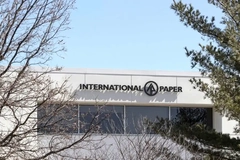Antalis innovation head: Automation key for navigating Brexit and COVID-19 labor and material shortages

09 Sep 2021 --- With the UK struggling with labor and material shortages, planning for peak packaging season has never been more critical, warns John Garner, head of innovation and design at Antalis, a bespoke packaging solutions provider.
PackagingInsights explores some of the key issues facing packaging and logistics operations with Garner, as he shares his advice on how to navigate challenges ranging from the UK Plastic Packaging Tax to Brexit labor shortages and COVID-19-induced material supply disruptions.
“If you thought peak 2020 was challenging, 2021 is throwing us even more curveballs, plus the Plastic Packaging Tax is looming ever closer, so it’s important to ensure any decisions made now are mindful of that, too,” he notes.
During 2020, packaging and logistics companies had to adapt and step up their operations to cope with the unprecedented demand for online ordering.
 John Garner, head of innovation and design at Antalis.“This year, shortages in labor and the raw materials needed for packaging production are adding to the challenges. With peak 2021 just around the corner, we have all the ingredients for a perfect storm.”
John Garner, head of innovation and design at Antalis.“This year, shortages in labor and the raw materials needed for packaging production are adding to the challenges. With peak 2021 just around the corner, we have all the ingredients for a perfect storm.”
“However, with careful navigation and the help of supportive and knowledgeable suppliers – ideally with reliable stock levels – most businesses should be able to ride it out and have a successful peak.”
Plastic tax looms on the horizon
The UK government’s Plastics Packaging Tax proposes a £200 (US$275) per metric ton tax rate for plastic packaging with less than 30 percent recycled content from April 2022.
The levy is expected to impact around 20,000 plastics packaging producers and importers. However, according to recent Veolia research, the vast majority of businesses are not even aware of the impending tax.
How can businesses better prepare for the levy? “It’s mainly an issue of making customers aware of their responsibilities as a manufacturer,” Garner says. “It will be their customer or their customers’ customer who picks up the responsibility for payment.”
“Manufacturers must list the taxation as a separate line for invoicing. This is a mandatory requirement. The law itself is slightly opaque as to who picks up the final charge. Expert advice around this is highly recommended.” According to Garner, several factors are contributing to the shortage of raw materials required for the production of paper-based packaging: the rapid growth in e-commerce, accelerated by the pandemic, has coincided with hampered manufacturing capability and put huge pressure on the supply chain.
According to Garner, several factors are contributing to the shortage of raw materials required for the production of paper-based packaging: the rapid growth in e-commerce, accelerated by the pandemic, has coincided with hampered manufacturing capability and put huge pressure on the supply chain.
Labor shortages: Automation to the rescue?
According to the Office for National Statistics, in the three months to July 2021, there was an average of 953,000 job vacancies in the UK, 21.4 percent higher than the pre-coronavirus level (January to March 2020).
“Many of those vacancies are in the warehousing and logistics sector, largely due to a significant fall in the number of migrant workers who have typically taken up many of these roles,” Garner explains. “This shortage of labor is putting pressure on a smaller number of existing staff to fulfill an ever-increasing number of orders.”
According to Garner, the most effective way to reduce the impact of staff shortages is through the introduction of packaging machinery. Over the last year and a half, Antalis has worked with businesses to identify and implement time and labor-saving devices.
These devices include automatic case erectors, packers and sealers, automatic pallet wrappers, and automated packaging systems.
For example, Antalis helped a leading UK retailer cope with the rise in online ordering by installing the PACjacket automated packaging system, capable of producing 20 bubble mailers per minute.
 The FillPak by Ranpak.“For smaller packaging operations, it’s worth considering some of the compact and portable void fill machines, such as the FillPak range by Ranpak, that create an environmentally-friendly crumpled paper void fill,” adds Garner.
The FillPak by Ranpak.“For smaller packaging operations, it’s worth considering some of the compact and portable void fill machines, such as the FillPak range by Ranpak, that create an environmentally-friendly crumpled paper void fill,” adds Garner.
Although he sees automated packaging machinery as a long-term investment, it is not the entire solution to labor shortages.
“The labor shortages are unlikely to be resolved by automation alone, although this can help mitigate, particularly around peak time when agency workers become increasingly in demand. It’s an issue for the government, but I suggest there is already a considerable lobby around this.”
COVID-19 chokes material supply
According to Garner, several factors are contributing to the shortage of raw materials required for the production of paper-based packaging. The rapid growth in e-commerce – accelerated by the pandemic – has coincided with hampered manufacturing capability and put huge pressure on the supply chain.
“The paper material shortages are pretty serious,” he tells PackagingInsights. “Lead times for converted corrugated is out in some cases until 2022. It’s unlikely to be resolved in the short term – most believe that Q3 2022 is the best case. Also, 2021 prices for corrugated will almost certainly have increased by 40 percent by the end of Q4.”
“Consider also that, for many years, the pulp and paper industry has been in decline as the world shifts to digital. Despite a renewed focus on paper-based packaging over recent years, as concerns around the use of single-use plastics grow, the forced shift to online shopping has accelerated demand far faster than anyone could have predicted.”
This unforeseen demand means the production of the pulp, starches and glues used in the manufacture of packaging materials has to be increased.
“Hold-ups at ports, caused by increased paperwork post-Brexit and the driver shortage, are all adding to delays. It’s important to remember pressure on paper supply is likely to increase still further once the Plastic Packaging Tax comes into force in April next year,” adds Garner.
Overcoming driver shortages
Garner continues with some advice for businesses concerned about how a lack of qualified drivers is affecting distribution. “One of the best ways to minimize the impact is by maximizing load sizes and reducing the number of vehicles required in the first place,” he suggests.
 Antalis’ Smart Packaging Centre creates bespoke packaging designs.Using less packaging, particularly bulky void fill and cushioning, means smaller cartons can be used and therefore more cartons can be loaded onto a pallet.
Antalis’ Smart Packaging Centre creates bespoke packaging designs.Using less packaging, particularly bulky void fill and cushioning, means smaller cartons can be used and therefore more cartons can be loaded onto a pallet.
Further, retention and suspension packaging can eliminate the need for void fill and cushioning, reducing weight and space while minimizing waste.
Meanwhile, machinery automatically matching the box size to the contents can improve speed and efficiency, reduce material use and save money. After measuring the height of the box contents, the box is folded to size before gluing the upper flaps to seal it. The resulting boxes can then be neatly stacked.
Antalis’ Smart Packaging Centre creates bespoke packaging designs to solve a whole range of challenges, including reducing transport costs.
“While preparations for peak time will be at the forefront of most people’s minds working in the packaging and logistics industry, it’s important to remember well-thought-out changes and investments made now will deliver benefits long into the future,” concludes Garner.
“Your packaging supplier should be able to advise on the best solutions for your business. At Antalis, we offer free audits whereby we will come in and review your operation and make recommendations on the kinds of improvements that can be made.”
By Joshua Poole











